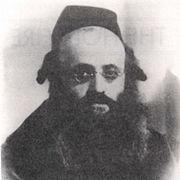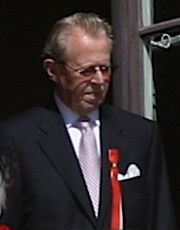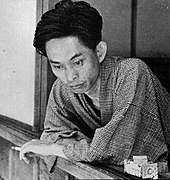Design
Design
Personality
Chart Properties
Your Cross represents the specific theme of your life. This cross embodies your unique potential & the lessons you're here to learn, providing a roadmap to fulfilling your life purpose.
We use the UTC birth time and date to do the calculations required to generate your Human Design chart.
Buy Tokens
Pay as you use, no expiry and no subscription required.Yukio Mishima's Biography
Japanese writer whose prolific output includes novels, short stories, plays and essays. One of his most memorable works was “The Sailor Who Fell From Grace With The Sea,” 1963. Mishima Yukio was the most important writer of post war Japan. He crystallized Japan’s tensions between longing for traditional ways of life and the persistent demands of encroaching westernization. Life magazine called him “the Japanese Hemingway.”
The first child of a high level civil servant, Mishima was taken from his mother by his grandmother and raised by her on the first floor of the family home, only allowed to be with his mother when she fed him. The grandmother kept her grandson by her side at all times. He was educated at the prestigious Peers School in Tokyo. He began to write as a youth, and published his first short story at 16 under the pseudonym Mishima Yukio to conceal his age.
From adolescence on he was possessed by violent, macabre and sado-masochistic fantasies, playing out imagery of murder for entertainment, cannibalism and homosexuality, masturbating for the first time over a picture of a bleeding martyred saint. When World War II began, he tried to join the army but failed to qualify, and instead spent the war working in a factory in Tokyo and writing. After Japan’s defeat, he studied law at the University of Tokyo, graduating in 1947. He worked for a brief time at the Finance Ministry before deciding to support himself exclusively from his writing.
The publication in 1949 of his second novel, “Confessions of a Mask,” brought the youth immediate fame. The story of a boy who comes to recognize his homosexuality and the need to conceal it behind a mask, the novel was taken as a sensitive coming of age tale by Japanese audiences who seemed to have missed its homosexual themes. Other novels followed, including “Forbidden Colors,” 1953, “The Temple of the Golden Pavilion,” 1959 and “Sun and Steel,” 1968. Mishima also wrote numerous plays, including the famous “Madame de Sade” as well as works for the Kabuki Theater and modern Noh drama.
In 1966 Mishima directed and starred in the film “Patriotism,” based on his short story of the same name. Both film and story focus–in morbidly riveting detail–on a young Japanese military officer and his devoted wife as they prepare for and commit the ritual suicide known as seppuku. The effect is mesmerizing and deeply unsettling.
Mishima was increasingly drawn to the militaristic samurai past of Japan as an antidote to what he saw as the materialism of the modern world. In his greatest work, “The Sea of Fertility,” 1969-1971, he used the image of the barren “seas” of the moon to capture the sterility of contemporary Japan. These four novels are considered to be his masterwork, depicting together a portrait of Japanese life from 1912 to 1970. A right-wing nationalist, he was a fervent proponent for a return to the ancient virtues of Japan. Though deeply attracted to the patriotism of imperial Japan and the samurai spirit of Japan’s past, he nonetheless dressed in Western clothes and lived in a Western-style house.
He was also attracted to and celebrated the venerable tradition of homosexual love between samurai warriors (which had so shocked 16th century Jesuit missionaries). He started body building in 1955 and took up karate and kendo himself, a traditional Japanese form of swordsmanship. The formerly delicate youth who had failed to qualify for the army built up his own private army of 100 young men who were prepared to defend the Emperor in the event of a leftist uprising or communist attack such as Mishima’s paranoia feared was growing more likely in the late 1960s.
He took the Buddhist name of Shobuin Bunkan Koi Koji (Buddhist Lay Spirit of Literature and Martial Arts, Mirror of Culture.) On 11 June 1958 he married Yoko Sugiyama, a student of English at Nihon Woman’s College and the eldest daughter of the Japanese painter Yasushi Sugiyama. A ceremony for the arranged marriage was held at the International Cultural Hall at Tokyo. They had a daughter, Noriko, on 2 June 1959 and a son, Iichiro, on 2 May 1962.
Although married, Mishima patronized gay bars in the Ginza district of Tokyo. He despised effeminate men, and was what the Japanese call “a bearer of two swords,” meaning he kept the company of both men and women, though he preferred men. His marriage preserved the necessary facade of propriety – a facade his widow maintained after his death by censoring all press reports concerning her husband’s homosexuality.
At the height of his career, after having written over 100 works, and receiving three Nobel Prize nominations for literature, Mishima committed a ritualized suicide. On 25 November 1970, he and four young followers from his army, the Secret Shield, broke into the National Defense Headquarters in Tokyo. Armed with swords, they made their way to the building’s roof, where Mishima made a ten-minute speech to some thousand servicemen gathered below. He attacked the Japanese constitution – with its prohibition on national rearmament – for having betrayed the spirit of Japan: “We see Japan reveling in prosperity,” he exhorted his audience, “and wallowing in spiritual emptiness… Is it possible that you value life, given a world where the spirit is dead?” His audience was unimpressed. In the samurai tradition of suicide protest, Mishima then committed seppuku, plunging the knife in his stomach to disembowel himself. In accordance with tradition, one of his disciples – Morita, who was said to be Mishima’s lover – decapitated his master with his sword.
Link to Wikipedia biography
Yukio Mishima
Your Cross represents the specific theme of your life. This cross embodies your unique potential & the lessons you're here to learn, providing a roadmap to fulfilling your life purpose.
We use the UTC birth time and date to do the calculations required to generate your Human Design chart.
Prompt Ideas
Get inspired with some epic prompt ideas.

Kalonymus Kalman Shapira
1/3 Sacral Manifesting Generator

Johan Martin Ferner
3/5 Emotional - Solar Plexus Manifesting GeneratorL’Esperance Quintuplets
1/3 Emotional - Solar Plexus GeneratorGustave Pedron
5/1 Emotional - Solar Plexus ProjectorUgo Gussalli Beretta
5/1 Emotional - Solar Plexus Generator





